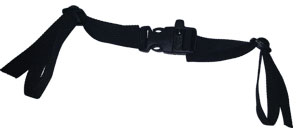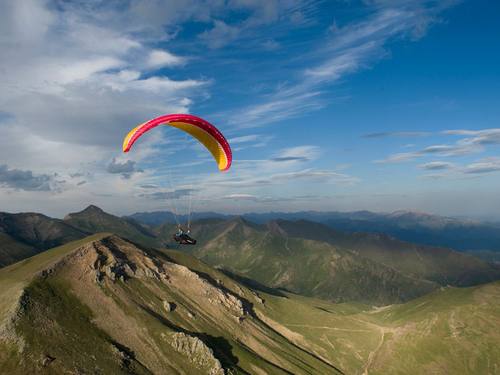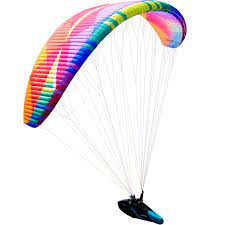The Nevada is the newest Gradient glider in the EN B class. See the Nevada's Review in Skywings mag below!
The Gradient Nevada’s ground plan has a slender, elliptical shape with a slight positive contortion of the leading edge. This means that the “ears” (stabilo) of the canopy are slightly swept back in flight. This modern design has a number of advantages. The paraglider’s profile has been specially developed to deliver maximum stability over as wide a speed range as possible. The position and size of the cell openings help support this objective.
The leading edge is reinforced using integrated nylon and elastic. This ensures optimal inflation of the canopy and helps to retain the leading edge’s perfectly clean shape at maximum speed.
Attachment points between the lines and the canopy are reinforced by elastic nylon strings, optimising the distribution of forces across the glider.
Gradient’s unique DDsystem makes it possible to reduce line consumption to less than 241m (size 28) – more than 33% less line when compared with the Gradient Golden 3!
The layout of the line attachment points improve stability at maximum speed – an essential feature of modern high-performance paragliders.
The upper level lines have progressively differing diameters and are made from special, very strong unsheathed lines. All these lines have the advantage of splice loops, to give maximum overall strength, durability and the lowest possible drag.
The sophisticated combination of Dyneema and Vectran lines with different shrinking characteristics used in the glider maintain the correct geometry within the suspension system for a long time.
The Gradient Nevada is supplied with a well proven three-riser speed-system which gives great acceleration and maximum speed.
Gradient has paid attention to small details too, including new low-drag micro attachment points on the paraglider's wing tips, small karabiners with special Gradient plastic locks for lines, new rucksack, inner bag and riser bag, etc.





